
Milan’s mc2gallery showed all monochromatic art and filled the booth with black confetti. The upside of this was that the space immediately caught one’s attention. The downside? I don’t think I noticed any individual works.
Within five minutes of walking into Pulse, an Italian gallerist had asked me to pose for a selfie with her and then doused us both in black confetti. I think it’s still stuck in my hair. I mention this because it set the tone for what was to come—for better or for worse, Pulse this year was unpredictable and characterized by a sense of fun. There were gimmicky gestures aplenty, but no one seemed to be taking themselves too seriously. It felt less like an art fair and more like several dozen simultaneous art openings.
Contrast that with The Armory Show, where there were almost no surprises and the general feeling in the cavernous hall was one of boredom and/or irritation. Here, though, artists and dealers alike seemed eager to discuss the work. Even if something’s not great, it’s made more endearing by enthusiasm. Walking around this fair’s New York iteration, I thought of Paddy’s post from Miami, Great Strides Made Yet Needed at Pulse. All of it rings true here. There’s a lot of schlocky work on display, but in an odd way, that makes it easier to spot the worthwhile highlights. With the extremes of quality in such sharp relief, there’s space for experimentation and a sense of play lacking at so many fairs.
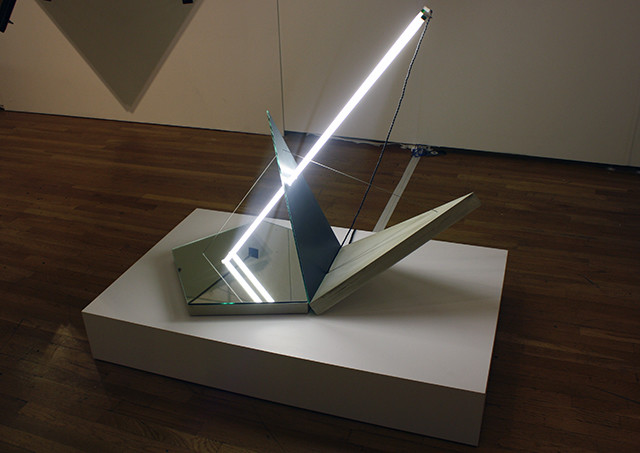
Brookhart Jonquil at Emerson Dorsch
Even within the small fair’s most successful presentations, there was an impressive diversity of work. I’m thinking of two solo projects by artists (full disclosure: both of whom I know) that stole the show in totally different ways. Emerson Dorsch (one of the Miami galleries I spoke with about real estate earlier this year) envisioned their booth as a mini “retrospective” of sculptor Brookhart Jonquil. And really, the presentation was museum-quality. Jonquil’s mirrored works are informed by a utopian gaze toward the geometry of the universe—from astronomy to atomic structures. There’s a sense of wonder in these that trumps all the other reflective work here. Also, they’re extremely popular for selfies. The piece below, though, has a “sweet spot” where the viewer disappears. The effect resembles an atom or celestial body, but is comprised of just four mirrors supported by anchors, one fiberglass rod, and the blank gallery wall:
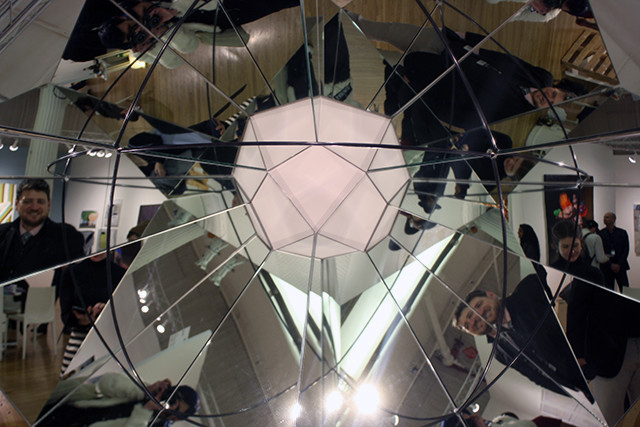
Brookhart Jonquil at Emerson Dorsch
The assemblage is so involved, the gallerists had to reinforce the flimsy temporary walls to support it. All that effort and attention to detail paid off, though. A few of the works had sold when I stopped by Friday.

Macon Reed’s “Eulogy for the Dyke Bar” presented by Mackin Projects.
On the opposite end of the aesthetic spectrum, Macon Reed’s Eulogy for the Dyke Bar served as an installation, functioning bar for the fair, and queer events space. We showed excerpts from the installation’s first iteration at our Miami pop-up F.A.G. Bar and it was great to see it fully realized. It’s worlds away from a standard gallery booth. Several generations of queers were gathered together for “Dyke Trivia”, hosted by Damien Luxe and Ariel Speed Wagon (below):
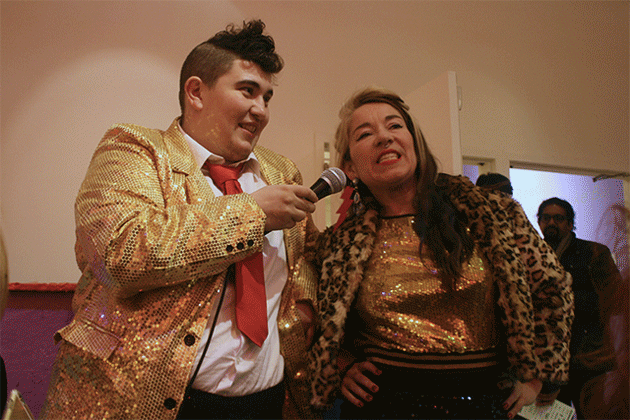
After about one round of trivia, I felt like the world’s worst queer. Dyke culture is all but invisible in the mainstream, and my utter lack of knowledge about pioneers, activists, and artists made me even sadder that lesbian spaces are disappearing from American cities at such an alarming rate (there are almost no lesbian bars left in most metro areas, largely as a result of gentrification and the gender income gap). At the end of the night, there was a rallying chant from the crowd “Keep this bar open!” If only we could…
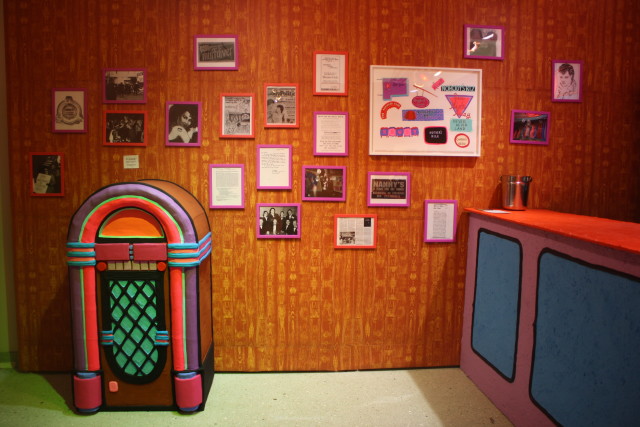
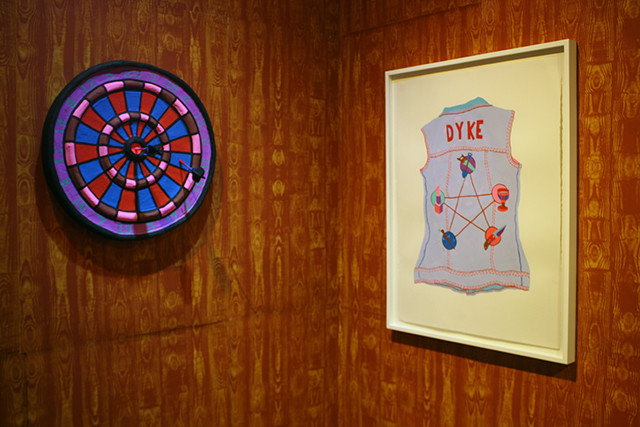
Macon Reed’s painting of a denim vest is probably my favorite thing I’ve ever seen at an art fair. The points of the pentagram contain icons such as carpentry tools and a tube of lipstick. YAAAAAAS.
But before I get into the other highlights, I’d like to point out exactly what type of artwork gives satellite fairs like Pulse a bad name. These pieces by Nicola Bolla seem as if they were produced specifically to cater to the tastes of the worst kind of new money bros. They’re dated and derivative and showing at not one, but two different galleries. Get it? AK-47s are cool and rhinestones are cool and so are skulls.

Nicola Bolla at Galerie Italienne (Paris)
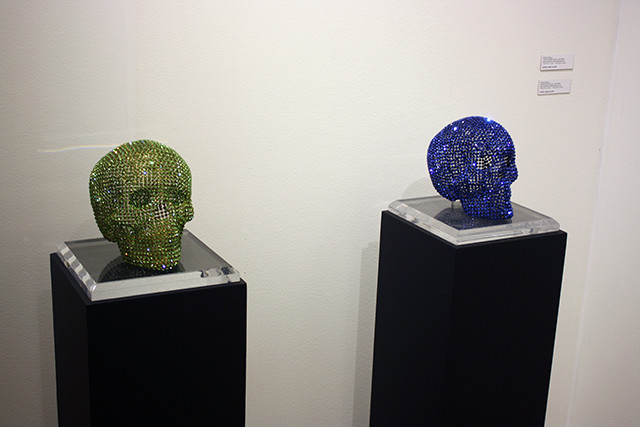
Nicola Bolla at New York’s Nohra Haime Gallery
Now on to highlights:
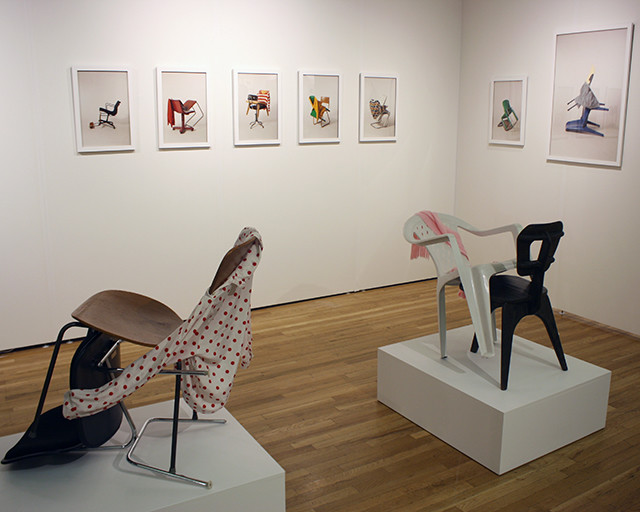
New York’s Kinder Modern featured “furniture porn” from Dutch artists Margriet Craens and Lucas Maassen. When the real-life couple first met, they would send each other drawings of chairs fucking in lieu of sexting. These became a series of playful photographs, a publication, and here an installation.
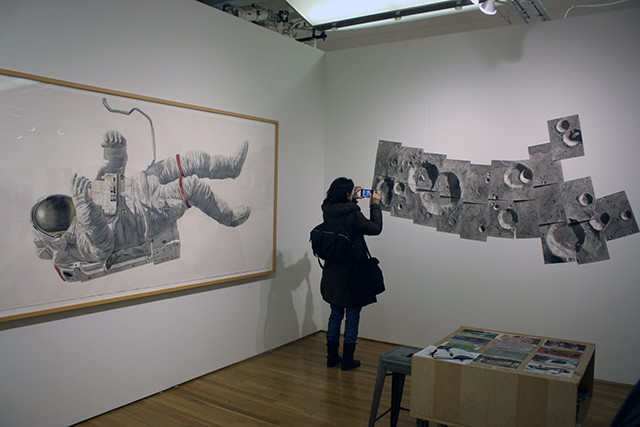
Thomas Broadbent at Brooklyn’s Front Room Gallery. These delicate drawings of the moon and an astronaut feel like a real labor of love. There’s something sad about them too: space always holds a sense of unattainable wonder. Didn’t we all want to be astronauts when we grew up?
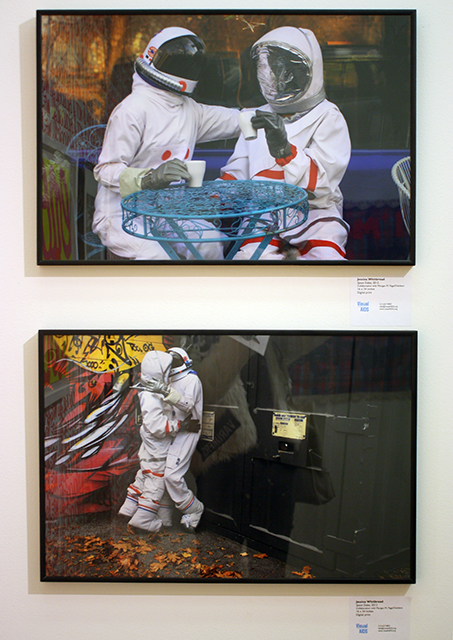
More astronauts, this time in Jessica Whitbread’s “Space Dates” series at Visual AIDS. These are funny and bittersweet—evoking anxieties over safe sex but also maybe suggesting that love finds a way?
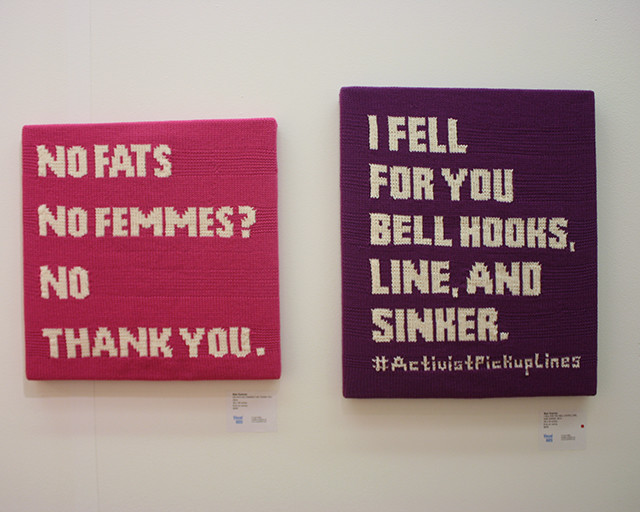
Ben Cuevas, also at Visual AIDS. “I FELL FOR YOU BELL HOOKS, LINE, AND SINKER,” 2016, is probably one of my favorite pun-y works of the year. And it’s only $650! How would bell hooks feel about an all-caps name treatment? Who knows. But I’d fall for this pickup line.
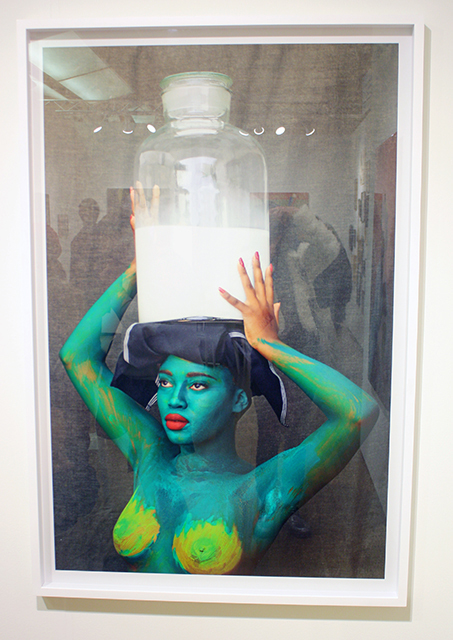
Capetown’s Christopher Moller Gallery has a solo show of self-portraits by Tony Gum. Gum is a bit like Cindy Sherman and a bit like Ryan Trecartin, creating weird fashion-shoot looking pieces with facepaint and accessories like a Coca Cola crate. They’re great.

Brenna Murphy at Laffy Maffei Gallery (Paris). The whole booth was covered in digitally-printed wallpaper and projections, inspired by Foucault’s theories of permeable, ever-changing utopian/dystopian architectures.


Comments on this entry are closed.